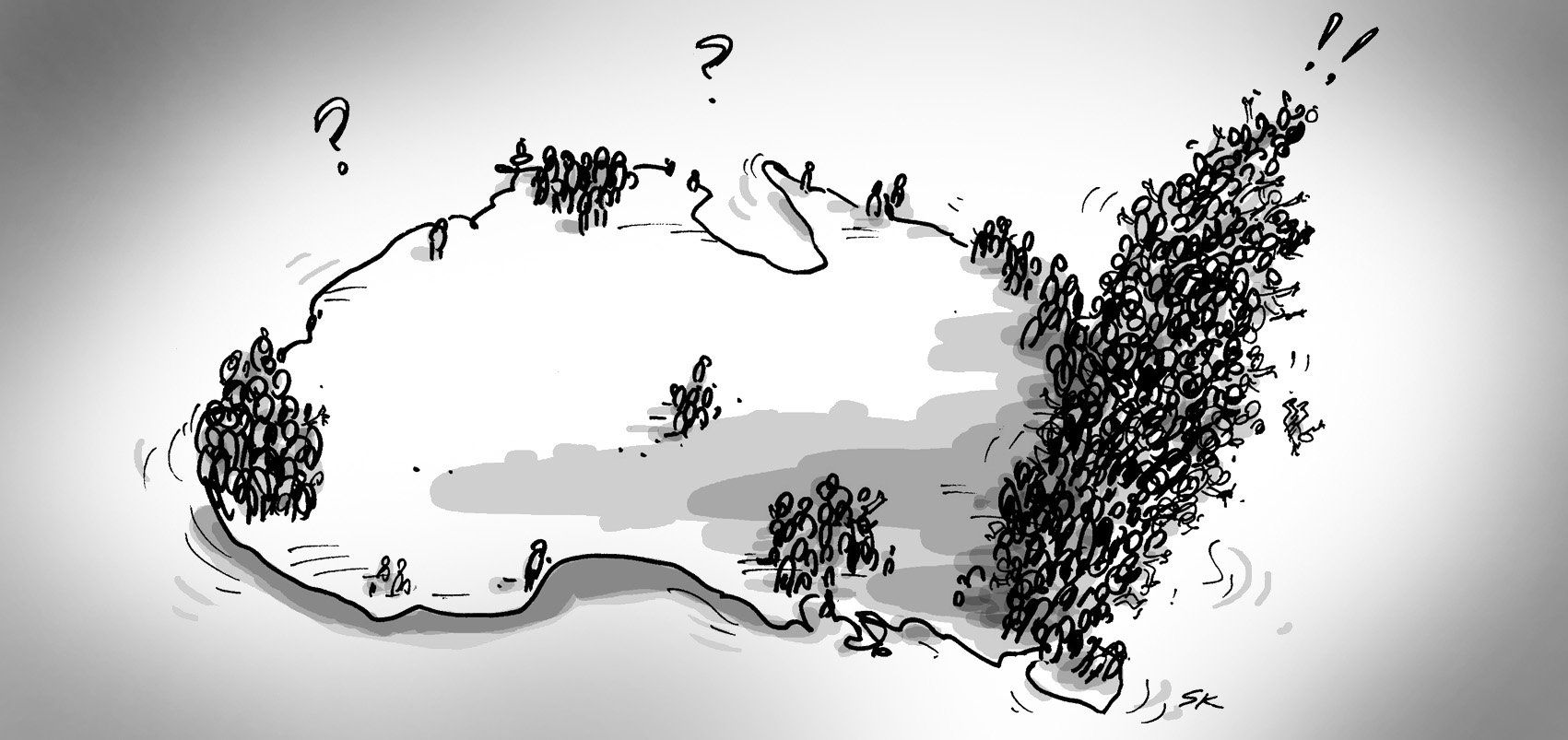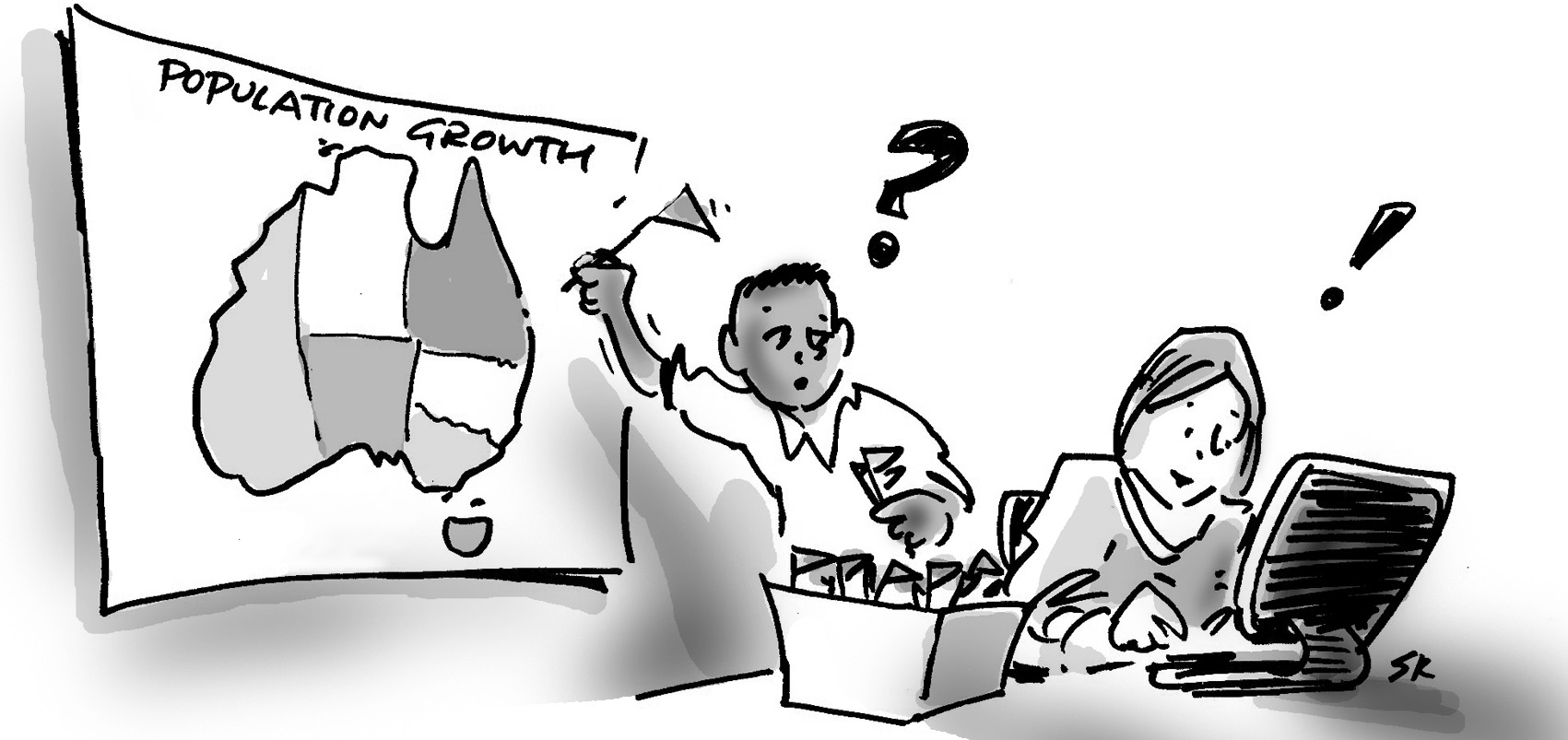BLOG
Population growth slows in 2020 but Perth is the fastest growing LGA
Population growth slows in 2020 but Perth is the fastest growing LGA
Glenn explores the annual regional population data release from the ABS, telling the story of population growth and decline across Local Government Areas and the impact we’re seeing from the COVID-19 pandemic.
The ABS has just released the annual population and migration update for all Local Government Areas in Australia: Regional Population (or the publication formerly known as 3218.0 – Regional Population Growth, Australia).
How has COVID-19 impacted population growth in Australia?
This population update for all areas is eagerly awaited every year. It is released in late March and refers to the period ended June of the previous year, in this case June 2020. Anticipation this year was greater than usual, as we know the effects of COVID-19 on population have been profound, mainly through the effective ending of overseas migration in Australia but also through altered internal migration patterns. Fortunately, the number of COVID-related deaths in Australia were comparatively low and have had a negligible effect on our population trends.
Because population is released annually for small areas, however, there isn’t as profound an effect as you might expect. Overseas migration underpins about 60% of Australia’s population growth normally, but it was only halted in March 2020, meaning almost 3/4 of the financial year we’re looking at was “business as usual”. The real effect will come in next year’s figures – 2020/21 – where we are heading for a population decline nationwide.
In the year ended June 2020, Australia grew by 331,500 people, or 1.3% – down from the 382,000 the previous year, but hardly “unprecedented”. The majority of the growth (74% of it) remained in our capital cities, which added 245,300 people, to Regional Australia’s 86,200. Melbourne added 80,000, to Sydney’s 57,000 as their populations edged closer. We had been predicting Melbourne to overtake Sydney by the late 2020s, and by some geographic definitions it already has – but the greater metropolitan areas are still about 200,000 people different, and Melbourne’s growth is likely to be negative in the next year, so it may be a way off yet.
Where did we see signifcant population growth?
The growth at the LGA level was focused on the fringes of our capitals. Here are the top 10 largest growth areas in 2020/21.
| LGA | 2020 ERP | 2021 ERP | Change | Change % |
|---|---|---|---|---|
| Brisbane Qld | 1,253,647 | 1,272,999 | 19,352 | 1.5% |
| Gold Coast Qld | 620,437 | 635,191 | 14,754 | 2.4% |
| Wyndham Vic | 270,607 | 283,294 | 12,687 | 4.7% |
| Casey Vic | 353,962 | 364,600 | 10,638 | 3.0% |
| Moreton Bay Qld | 469,442 | 479,639 | 10,197 | 2.2% |
| Blacktown NSW | 374,372 | 382,831 | 8,459 | 2.3% |
| Sunshine Coast Qld | 328,390 | 336,482 | 8,092 | 2.5% |
| Hume Vic | 233,545 | 241,188 | 7,643 | 3.3% |
| Logan Qld | 334,353 | 341,985 | 7,632 | 2.3% |
| Melton Vic | 164,936 | 172,500 | 7,564 | 4.6% |
These areas experienced the biggest increases in population numerically. This method tends to favour large LGAs with big populations to begin with; the percentage increases – while all above the national average – aren’t necessarily huge. Brisbane always tops this list as it’s the only LGA in Australia with more than one million people. Five of the top ten are in Queensland, and four are in Victoria.
Fastest growth shows the LGAs with the largest increase as a percentage of the previous year’s population, and is the more usual way of expressing growth.
| LGA | 2020 ERP | 2021 ERP | Change | Change % |
|---|---|---|---|---|
| Perth WA | 28,916 | 30,971 | 2,055 | 7.1% |
| Camden NSW | 101,420 | 107,806 | 6,386 | 6.3% |
| Wyndham Vic | 270,607 | 283,294 | 12,687 | 4.7% |
| Melton Vic | 164,936 | 172,500 | 7,564 | 4.6% |
| Serpentine-Jarrahdale WA | 32,574 | 33,920 | 1,346 | 4.1% |
| Surf Coast Vic | 33,457 | 34,771 | 1,314 | 3.9% |
| Kwinana WA | 45,118 | 46,787 | 1,669 | 3.7% |
| Cardinia Vic | 112,179 | 116,193 | 4,014 | 3.6% |
| Armadale WA | 90,843 | 93,928 | 3,085 | 3.4% |
| Ipswich Qld | 222,311 | 229,845 | 7,534 | 3.4% |
Perth sees the fastest population growth
On this measure, the City of Perth overtook perennial fringe growth areas of Wyndham and Camden to be the fastest growing area in Australia. Although it added only about 2,000 people, this was enough on its relatively small central city population to lift it to this level. Along with Armadale, Kwinana and Serpentine-Jarrahdale, all in Perth’s south, it helped WA areas to dominate this list for 2020, reflecting a significant change in fortunes as WA weathers the pandemic with strong border closures, and stems the flow of people heading east after the mining boom ended a few years ago.
Also entering the fastest growing areas list is Surf Coast Shire in Victoria – the only non metropolitan LGA to make it. Almost 4% growth increased from the last few years, and may reflect the attraction of this seachange destination in the pandemic/work from home environment. The next year’s figures will be very interesting for Surf Coast, now the 6th fastest growing area in Australia.
Where did we see signifcant population decline?
Of course it’s not all growth. In 2019-20, 152 of the nation’s 543 LGAs and unincorporated areas experienced a population decline (down from 177 areas in 2019).
The fastest declines (as a percentage of population) were mainly found in more remote areas with small populations to start with, including Brewarrina NSW (-3.6%), Cobar NSW (-3.4%) and Arukun (Qld) (-3.4%) – but these, although large in percentage terms, were generally declines of less than 100 people.
The greatest numerical declines are:
| LGA | 2020 ERP | 2021 ERP | Change | Change % |
|---|---|---|---|---|
| Brimbank Vic | 209,568 | 208,247 | -1,321 | -0.6% |
| Darwin NT | 83,016 | 82,030 | -986 | -1.2% |
| Fairfield NSW | 211,654 | 210,825 | -829 | -0.4% |
| Kalgoorlie/Boulder WA | 29,485 | 29,055 | -430 | -1.5% |
| Broken Hill NSW | 17,477 | 17,269 | -208 | -1.2% |
| Moree Plains NSW | 13,260 | 13,077 | -183 | -1.4% |
| Mosman NSW | 30,960 | 30,785 | -175 | -0.6% |
| Boroondara Vic | 183,197 | 183,023 | -174 | -0.1% |
| Port Augusta SA | 13,860 | 13,697 | -163 | -1.2% |
| Whyalla SA | 21,663 | 21,506 | -157 | -0.7% |
How is COVID-19 driving population decline?
This is where we can start to see pandemic effects. In recent years, everywhere in capital cities has been growing, due to the large influx of overseas migrants. Now, we start to see significant population declines in some areas of our capital cities. Notably topping this list – the City of Brimbank, Victoria, which is one of the most culturally diverse areas in the nation, and a first port of call for migrants. It has had outward migration to Melton of established families seeking new housing for quite a while but in recent years has made up for this with migration from overseas. With that ending late in the financial year, Brimbank’s population was the only one in the nation to lose more than 1,000 people. Fairfield in NSW is losing population after many years of growth for precisely the same reasons – much of its population was supported by refugee intake, which has ceased for the moment. Darwin has been declining for a while, due to the end of offshore gas projects in the NT. Other capital city areas in the list are Boroondara, Victoria, an affluent area but very reliant on international students, and Mosman NSW, one of the most affluent areas in the country.
The remainder of this top 10 list would be more familiar from previous years and represent older regional communities which have had structural population decline for some time.
Stable populations
And the prize for the most stable population? There were actually a record 11 LGAs whose population was exactly the same in 2020 as in 2019 – the largest of these was Edward River Council, (Deniliquin, NSW), which had 9,083 people both years.
Building a better picture of COVID-19 impacts
While the immediate headlines seem to be business as usual, there are a few COVID-19 fingerprints (appropriately hand sanitised) on this population update. It’s the next year’s figures which will tell a really important story, remembering that at June 2020, this data only reflects the first 4 months of the pandemic.
We are working to get these population updates into all our Community Profile (profile.id ) and Economic Profile (economy.id) sites as soon as possible, and assessing the impact of this new information on our population forecasts.. This will show not just population change for your LGA, but all the small areas, suburbs, districts and towns as well. Subscribe to product updates to hear when this is done. And, of course, it’s a Census year too! 2021 Census promises to show some of the most dramatic shifts in demographics in a generation. Census night is August 10th, and we’ll be covering that before and after – watch this space!
Glenn - The Census Expert
Glenn is our resident Census expert. After ten years working at the ABS, Glenn's deep knowledge of the Census has been a crucial input in the development of our community profiles. These tools help everyday people uncover the rich and important stories about our communities that are often hidden deep in the Census data. Glenn is also our most prolific blogger - if you're reading this, you've just finished reading one of his blogs. Take a quick look at the front page of our blog and you'll no doubt find more of Glenn's latest work. As a client manager, Glenn travels the country giving sought-after briefings to councils and communities (these are also great opportunities for Glenn to tend to his rankings in Geolocation games such as Munzee and Geocaching).








